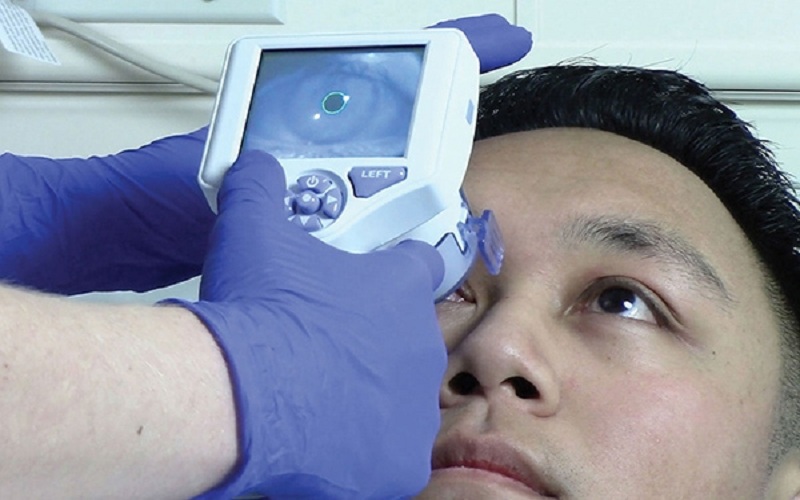
Pupilometry is an instrument used in pupil evaluation. In critical care, patients are usually evaluated for signs of neurological problems. This procedure is conducted with the use of a neurological instrument. Known as neurological tools, these instruments examine the pupils for vital signs. Over the years, these neurological tools have evolved.
Manual Pupilometers
Pupilometry is the medical field responsible for measuring pupil sizes. This procedure for assessing the pupils involves the use of a pupillometer. In the early days, pupillary size measurement was carried out using traditional methods. The tools used in this case were called manual pupilometers. Many manual pupillometry exist in clinical applications. The most popular of these is the Haab’s pupillometer. Other manual instruments included a flashlight or a penlight. This was used to measure the size or reactivity of the pupils. However, as other advanced devices became available, these traditional instruments were abandoned.
Pupillometer
As technology advanced, there were more sophisticated tools for pupil diameter measurement. The pupillometer is an advanced tool that is fully automated to conduct pupil assessments. This medical device works by measuring the size of the pupil in the presence of light. In addition, automated pupillometers can be used to measure the pupillary light reflex.
Automated pupillometry
The pupillometer is an automated device. However, there are other more advanced tools for pupillary size measurement. The Npi pupillometer is an automated neurological tool. This handheld device is highly reliable and gives objective measurements. As an advanced tool, it can measure the whole Pupillary Light Reflex (PLR). The NPI Pupilometer is available in a spectrum of variants. These are noninvasive optical scanners that provide clinicians with very accurate results. The state-of-the-art tool works with other computer systems to produce accurate measurements. Many of these handheld devices feature innovative capabilities such as wireless charging and 1D/2D barcode scanner. The NPI pupillometer is like the rock star of automated pupillometry. They have been dubbed as the next-generation pupillometer ideal for critical care.
Pupilometry and the Neurological Pupil Index
Technological advancements in pupil measurements led to the creation of the Neurological Pupil Index (NPI). This is a numeric scale (from 0 to 4.9) that makes pupil reactivity quantifiable. The scale makes it easy to interpret and classify pupil responses. This NPI model is operated by comparing pupillary light reflex from the patient to standard measurements. With this model, the pupil response can be classified within:
- The normal range, which is greater than 3.0
- The abnormal range, which is less than 3.0
- Or can be classified as non-reactive, immeasurable, or atypical, which has a value of 0.
The importance of pupil measurement technology
Pupilometry must undergo a revolution. This has led to the availability of reliable and real-time measurement pupillometers. These advanced pupillometers have enhanced many neurological practices around the world. Neurological examination is very central to critical care for patients. Clinicians currently evaluate so many patients for a wide range of health conditions. It is more important than ever that they have access to the latest pupil measurement technologies.
The effects of the pupillometry revolution
The pupillometry revolution has Led to quality improvement in pupil assessment. Advanced pupillometry has helped many hospitals to provide high-quality care. With automated pupillometry, clinical establishments can easily meet several quality objectives of healthcare. Some of these objectives include providing healthcare that is:
- Timely,
- Equitable,
- Patient-centered,
- Efficient,
- Safe,
- Effective,
- Noninvasive
The future of pupil measurement technology
Pupil assessments have relied on various advanced technologies to save many lives across the world. This is an indispensable tool that is used in the Intensive Care Unit (ICU). Many hospitals have adopted the use of automated pupillometry for highly accurate patient outcomes. The fully automated device is quickly being recognized as a standard for pupillary assessments. It can be used on patients with various types of critical illness. The future of pupillometry means that the device will continue to evolve. Many worldwide leaders like Neuroptics continue to advance the field of pupillometry. These are medical innovators who are inspired to help hospitals improve patient outcomes. Many automated pupillometry can be used in various medical fields. Primary applications of these tools include:
- Applied research,
- Emergency medicine,
- Neurosurgery,
- Neurology,
- Critical care medicine



